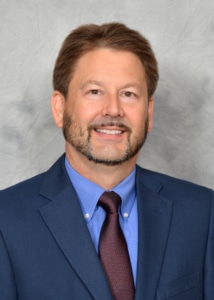Case Study #9: Fishing Trips
 John Bowen was the CEO of Reinhardt Werba Bowen (RWB), a financial services company that was acquired by Assante Capital in 1998 for $25M.
John Bowen was the CEO of Reinhardt Werba Bowen (RWB), a financial services company that was acquired by Assante Capital in 1998 for $25M.
While the exit was ultimately a happy one, it started inauspiciously. Why? Because John was the object of a “fishing trip” from a competitor.
What’s a “fishing trip”?
Sometimes a firm that’s in the same space or looking to come into your space will put together a Letter of Intent to start the diligence process. The goal is to get a better sense of your business and your direction.
While there’s an outside chance of a sale actually closing, most times that’s definitely not the goal. The goal is to fish for valuable insider information.
Why did John’s firm want to sell in the first place?
John and the other two partners (they each had ⅓ of the firm) didn’t have the expertise or capital to scale up their growth. As they went out into the private equity sector to raise funds, they found that most weren’t interested in this expansion of theirs. Instead, they wanted to buy the entire firm outright.
At one point, a global bank offered a terms sheet with the number $37M at the top. Given that the EBITDA of the firm was $1.6M (not normalized for owner compensation), this seemed too good of an opportunity to pass up.
What were the warning signs?
The biggest warning sign was the slow walk from the acquirer. We’ve said over and over that time kills deals, and this buyer was very slow in its due diligence. What else?
- RWB was based in Silicon Valley. The acquirer was based in New York and they would never send anyone very senior to California, but always demanded that all the principals come to New York.
- RWB had quickly built a practice around Silicon Valley entrepreneurs and this firm had almost no experience in that space, AND
- They were almost entirely focused on strategic questions. They wanted to know how the business ran, what kind of software was being used, the differentiators RWB was using, etc. And they had almost no questions on financial modeling or the P&Ls (the classic due diligence questions).
“Never gonna happen”
John finally got wise to the strategy of the acquirer. This happened when a trusted advisor looked over the terms sheet and was briefed on the process so far. “If you don’t have the agenda, they do.” John ended the process with the big bank. Next, he went back to the drawing board and focused on what the company was worth and why.
It was now known that RWB was for sale and some firms presented themselves as interested. They got an unsolicited term sheet from a firm that eventually ended up closing the deal. John noted that the entire process was so different. “They said they wanted to put this together in 6 weeks, and we did.” The momentum and intent was obvious.
Of the $25M exit, $15M was upfront and another $10M was in an earnout. John managed to escape being the victim of a fishing trip, close out a sale, and share his lessons with all of us.

 Jay has been in the industry for just about a decade. He has owned both a promotional products franchise as well as a ground shipping and transportation business. These experiences have helped him close deals in the latter space, but also means he brings the understanding of what it’s like to be an entrepreneur to each of his transactions.
Jay has been in the industry for just about a decade. He has owned both a promotional products franchise as well as a ground shipping and transportation business. These experiences have helped him close deals in the latter space, but also means he brings the understanding of what it’s like to be an entrepreneur to each of his transactions. The order confirmation email he and his team composed became viral:
The order confirmation email he and his team composed became viral: Phil had a regular 9-5 job at the time and worked nights and weekends to build a “closed door” pharmacy (one that wasn’t open to the public) that could fulfill the mail order clients.
Phil had a regular 9-5 job at the time and worked nights and weekends to build a “closed door” pharmacy (one that wasn’t open to the public) that could fulfill the mail order clients.